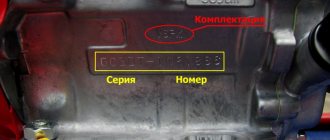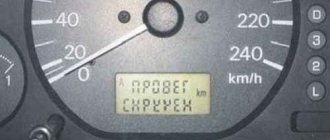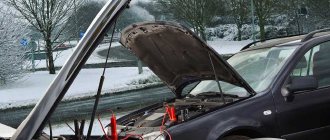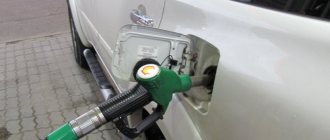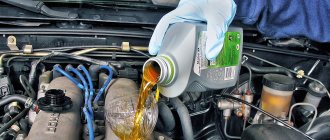Any car owner thinks about how to protect their car from theft or break-in. One option for this solution is to install an alarm system on a car. Experts say that there is nothing complicated in installing an alarm system on a car. If the owner knows how to use a screwdriver, a soldering iron and is versed in electronics, then, using the instructions, he will be able to independently install a car alarm on his “iron friend” with almost no problems.
How to choose a car alarm
The desire to protect their car from theft forces car owners to look for affordable and reliable alarm systems. Their task is to scare away an intruder with a sound signal or block the engine.
Based on functionality, alarms are divided into the following types:
Unilateral
If unauthorized access is attempted, they emit a signal (sound or light). Their advantage is their affordable cost. The disadvantage of such systems is the limited range of the signal (range up to 200 m). Being out of earshot, the car owner simply will not hear the alarm.
Double sided
They perform the same functions as one-way ones, with the addition of providing feedback. Using the key fob, the owner communicates with the car (at a distance of up to 4 km). Thanks to this, he is able to monitor her condition. When a door is opened, the ignition is turned on, or an impact occurs, the relevant information is displayed on the screen. Modern models also allow you to start the car remotely. Such systems are more expensive than one-way ones.
Satellite
They enable the owner of the car to track its location with high accuracy. When an attempt is made to break into the car, an alarm signal is sent to the owner and the security service. The system is capable of blocking the mechanisms and engine of the car, allowing you to “listen” to what is happening in the cabin. This type is the most expensive.
Getting started choosing an alarm
Car owners are at a loss as to what to choose. The main factor by which the cost of an alarm is determined is the price of the car. It is recommended to select a device in the price category of 10% of the cost of the car. Owners of cars that are popular with car thieves should additionally provide other anti-theft devices.
The range of the system, the presence of protection against hacking. Due to obstacles (houses, buildings), the actual signal range may decrease. Of course, additional features in the form of turning on the light or engine are convenient, but they should not determine the choice of alarm. When choosing an alarm system, you should not save money. The device must be of high quality, from a trusted manufacturer. It is better to give preference to unpromoted brands, the structure of which the hijackers have not yet had time to thoroughly study.
Tools needed to install a car alarm yourself
Those who believe that installing a car alarm with your own hands is a doable task will need:
- Phillips screwdriver (necessary for removing car panels);
- 10mm wrench with crank (for the same purposes);
- a device for stripping wires (you can use a regular knife and lighter, you can use pliers or special
- devices that are easy to find in a hardware store);
- high quality black electrical tape; double sided tape;
- a device for measuring voltage and conductivity (for example, a multimeter);
- foam rubber (needed to wrap the car alarm unit so it won’t rattle on rough roads);
- signaling.
Checking alarm operation and adjusting sensors
If you install the alarm yourself for the first time, errors at some stages are almost inevitable. It is important that they do not lead to serious negative consequences due to non-compliance with the general rules of installation work.
Therefore, checking that the connection points are selected correctly and that the security and service functions operate properly should be carried out at each stage until final assembly. The process of programming the corresponding functions is described in detail in the instructions for the alarm.
Adjusting the sensitivity of sensors, especially the shock sensor, deserves special attention. The adjusting screws are usually located in a visible place, and the adjustment itself is carried out (after connecting the sensor) by test mechanical effects on the body (tapping). If you leave the sensor at maximum sensitivity, the alarm may be triggered by slight gusts of wind or vehicles passing nearby.
After final assembly, you should once again carefully check that all the desired functions of the installed equipment operate.
The video below shows in detail the process of installing a car alarm with feedback yourself.
DIY car alarm installation
So, to install an alarm on a car with your own hands, you first need to understand where the central unit will be located. It is most convenient to install it in the cavity located behind the dashboard. Once the location is found, the process of installing a car alarm in the car begins. To do this, you need to remove two panels (most often they are held on by screws and clips) - the instrument panel and the steering panel. It is also necessary to remove the lower steering column trim. After this, the person who installs the car alarm has full access to the ignition switch. Do not forget that all connectors from the dashboard must not be lowered onto metal areas of the body. It is best to immediately wrap them with electrical tape, since they have open contacts, which, in contact with the metal of the body, can short circuit to ground. The second step is connecting the alarm wires.
Connecting to the control panel
We connect the “signaling” outputs to the turn signals or to the dimensions of the car, to the door opening indicator light and to control the running engine. If the car is equipped with an optocoupler panel, then all that can be connected are direction indicators. All other signals “come” to the panel in electronic form. To connect the wires, we need to find the turn signal lights on the back panel. There are tracks on the light bulb board. We need a 12 V contact. Once the contact is found, we need to check it. To do this, connect the connector to the track, turn on the turn signal and connect the multimeter. Voltage should appear on the multimeter at the moment when the turn signal light comes on. If so, the required wire has been found. Remember, never, under any circumstances, use the “light bulb” principle to find the wires you need. In a car, such a test can lead to shorted airbags, failure of the alternator relay and many similar things. Next, we look for the negative wire in the same way. The wire we need must react to an open door, so we carry out the same procedures and check them on an open door. The contact we need should show a voltage of minus 12 V when the door is open. If the car door is closed, the voltage should be 0. We are also looking for the engine start control wire. If the tachometer in a car performs this function, then it is impossible to “ring” it. Here it is necessary to take into account that three wires come to the tachometer - this is a plus, a minus and a negative pulse signal. To install, you need to find the wire that most often goes to the IG contact. We carry out the same actions with the charging and emergency pressure lamp for the engine.
Connection to the lock
The next step in installing a car alarm yourself is connecting to the central locking system. In order to do this, you need to find the lock activation relay (check it by opening and closing the car lock), and we carry out the same procedure as when connecting to the control panel.
Installation
If you decide that you need a car alarm installed by yourself, start by wrapping the wiring harness with electrical tape. It is best to choose black electrical tape - this way it will be less noticeable. This is done, firstly, in order to create an imitation of standard wiring, and secondly, to obtain double insulation. Remember, you need to close from the side of the alarm connector, and the most important thing is that you must not forget about the “tap connections”, each of which must also be wrapped with electrical tape. When the wires are ready, they need to be connected to the car alarm unit and the wires hidden. Next, according to the instructions, you need to connect the alarm wires and the machine wires. When connecting, you can use special clamps, but their problem is that if a thief decides to open the alarm, then, having opened the car, he will immediately see how and where to cut the wiring in order to turn off the siren. To avoid using special clips, you can use a lighter and a knife. The next step is to run the cable under the hood. Here we are talking about the positive input of the alarm (or rather, siren) and the limit switch. You can attach a siren to the already passed wires. As for the second cable of the alarm siren, it must be attached to ground. The siren itself can be installed in a standard threaded hole using an M6 bolt. The end cap can be mounted on a standard frame. Or you can install an additional panel for it. The plus must be connected to that wire, thanks to which, in any position of the key in the lock, plus 12 V is available.
Engine lock
Most often, the car engine is locked using the ignition wire, which comes out of the lock itself. To find it, you need to ring the six-pin connector of the lock without removing it. To connect, you need to find the wire at which there is a voltage of plus 12 V in the position of the key in the lock at the “ACC” mark, and when you turn the key to the Start mark, the plus disappears. This wire needs to be blocked. To correctly determine it, you need to pull the connector out of the lock and close the permanent plus with a jumper, and short-circuit the permanent plus and the starter with a second jumper. If the car starts, then, firstly, you must immediately remove the jumper, and secondly, this is the cable you are looking for. The cord must be cut, the connector inserted and checked. The car should not start. Next, according to the instructions for the alarm, you need to connect the wires of the alarm and the ignition switch. Don't forget to install a relay (as a rule, a relay is included in the standard configuration of car alarms). That's all, all that remains is to configure the system “for yourself”, check the correct operation and you can assume that you have installed an alarm system on your car yourself. As you can see, there is nothing difficult about installing a car alarm on a car yourself. All you need is not to be afraid to disassemble the car, have the necessary tools and a lot of free time.
Checking operation and adjusting sensors
The next task of the car owner who has installed sensors on the car is to check its performance and adjust the settings. The most accessible diagnostic method is to use the system for its intended purpose.
To do this, you need to activate the security functions and try to gain access to the car or hit it, gradually increasing the force of the impact. Having determined the degree of sensitivity to mechanical stress, you can change the settings. After that, open the door with the key and start the car - the alarm system should go off.
Make sure the other nodes are running smoothly.
Installing autorun with an alarm is always accompanied by some errors. Especially if the driver installs it on the car herself. The main thing is to know how to fix them in order to prevent negative consequences and system failure.
Experts recommend performing performance diagnostics at each installation stage.
If any device malfunctions, it is necessary to understand the reason for its occurrence. Many types of breakdowns have the same symptoms, so it is important for the driver to accurately diagnose them or immediately go to a service center.
First of all, you should check the functionality of the key fob by performing a visual inspection to determine external defects or damage. If the pager is exposed to moisture, condensation will form on the inside of the screen cover. As a result, the key fob will work unstably and will start to turn off spontaneously. If there has been no contact with water, but the device does not start, the batteries may have discharged.
What will the new security system give?
There may be many reasons for updating, but it is worth highlighting the most significant ones.
First of all, this is cryptographic resistance: old alarms operating on a radio channel with a primitive dynamic code, even in the most professional installation, are now absolutely useless against a more or less qualified hijacker. Replacing the old system with a new one that works with dialog code or does not have a radio channel at all is a more than reasonable solution.
The second reason is more convenient control and expansion of the communication range. In urban environments, older alarm models operating with broadband transceivers in the 433 MHz range already suffer greatly from interference - this range is overloaded. Modern signaling models can already operate at frequencies of 868 MHz and higher, with narrow modulation bands. This has the best effect on the quality of communication, especially in places with large concentrations of cars - for example, in hypermarket parking lots. Telematic alarms via the GSM channel expand the zone of reliable communication almost throughout the world where there is a cellular network: you can always get information about the state of the machine, which is something that classic feedback designs cannot physically do.
Replacing the “analog” one (that is, directly controlling the electrical circuits of the car) with an alarm system with CAN support is the third reason. Naturally, this only makes sense if the car has a developed network of controllers on a common bus - for modern cars this is the norm even in the budget segment. This makes autostart more convenient (market leaders, StarLine and Pandora, now offer keyless bypass of the immobilizer using the alarm system itself: there is no need to leave the chip or the entire key in an external bypass), and allows minimal interference with the standard wiring. In addition, connection to the CAN bus allows you to implement additional protective functions: • Code immobilizer using standard car buttons: the car will not start until a predetermined sequence is entered on them. It is impossible to detect such an immobilizer, since it is implemented purely in software.
Read more: How to find out the gearbox number
• Engine blocking via CAN bus: without any additional relays embedded in the wiring, the alarm system is able to stop the engine. Such blocking cannot be found (there are no insertion points), it cannot be bypassed by traditional “makeshifts” and jumpers, or by replacing the engine control unit. Only after physically removing the central unit, which a competent installer can hide very reliably, can the car be started.
However, having decided to replace the alarm system, there is no need to repeat a common mistake: many people believe that replacing an already installed system should cost less than installing it from scratch. In fact, the amount of work even increases, since the professional installer will not leave any of the old connections behind when doing the job all over again. Especially if, as often happens, the old system was installed “in a hurry.” So it’s worth adding to the price of the selected new system the price of installation in a professional studio, which you will have to find out for your city and car yourself: the price range can be very large.
